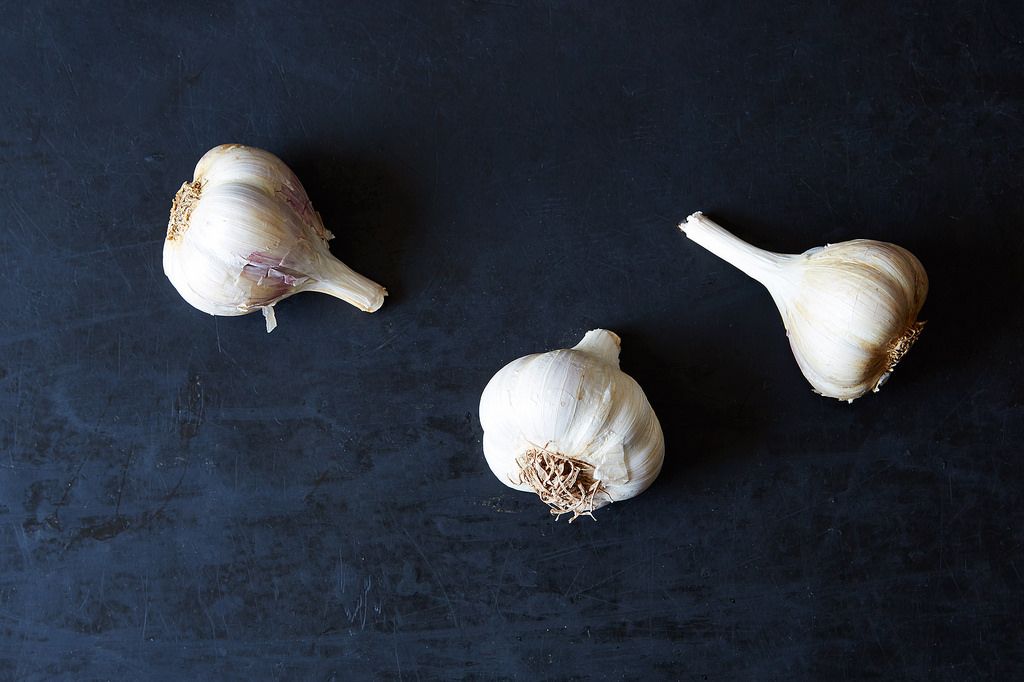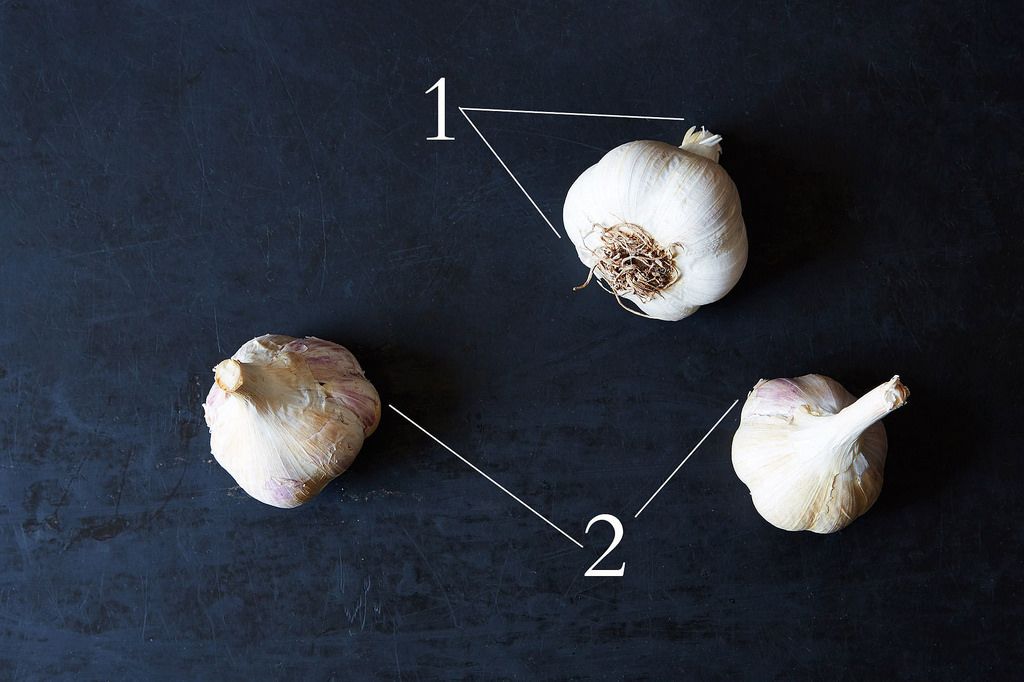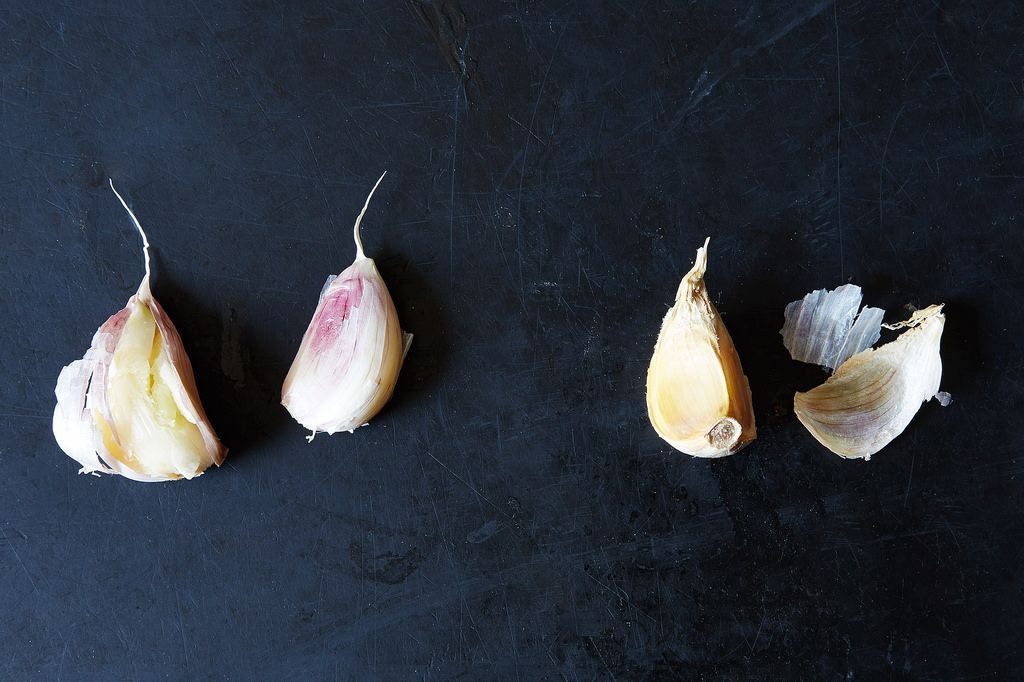Every week we get Down & Dirty, in which we break down our favorite unique seasonal fruits, vegetables, and more.
Today: We're still all about alliums, and you should be too, assuming you've got a good head on your shoulders -- or a good head of garlic in your kitchen.

There are many, many varieties of garlic, but they can all be classified as either hardneck or softneck garlic. Softneck garlic truly has a soft neck, meaning the central stalk is pliable enough to be manipulated -- this is the type used to make garlic braids. Softneck garlic tends to be milder in flavor and to have more cloves per bulb (up to 20!); hardneck garlic, on the other hand, has fewer cloves but they're larger (3, last photo) and easier to peel.
When you buy garlic, as is true when you buy onions, you're looking for hard, dry bulbs; like onions, they've been cured, which means they will last longer and store well. After being cured, the roots and stalk (1, photo below) are trimmed and the outmost layer of paper wrappers is removed. Then, the garlic is ready to hang out in a cool, dry place in your home for months. Both types of garlic store well once cured, but softneck garlic will keep for a much longer time than hardneck, which is why you'll usually find softneck garlic at grocery stores.
If stored long enough, you'll eventually see little green sprouts in your garlic cloves. We've mentioned before that we generally don't bother with removing them, but if you prefer to, just flick them out with the tip of a sharp knife.

For those who think garlic is garlic -- it isn’t all the same. Different varieties carry unique flavor profiles, but you’ll likely have to head to your local farmers market to try varieties like Inchelium Red, Kettle River Giant, Purple Glazer, and Sicilian Silver. Once you leave the supermarket, you’ll also see more color variation -- like purple streaks (2) -- in both the bulb wrappers and the cloves.
More: Stumble across a particularly spicy variety? Mellow your garlic.
And bonus: Once you get to know your local garlic farmer, you’ll have an easier time getting your hands on garlic at other stages of growth -- early season treats like green garlic and garlic scapes (the latter of which are only produced by hardneck garlic) and wet or fresh garlic (which is fully mature garlic that is eaten immediately after it has been harvested, without going through the curing process).

If you’ve ever come across black garlic, that’s not a specific variety -- it’s garlic that’s gone through a fermentation process. Deborah Madison describes the flavor as having a lot going on: “First there’s a hit of sweetness, followed by a faint hint of smoke, then a pungency that lingers long after the sweetness is gone.” If you’ve tried it and you weren’t immediately converted to its charms, Madison recommends cooking with it, as the flavor changes with heat.
For some, garlic cloves can be as aggravating as shallots; recipes will call for a set number of cloves, but when heads of garlic can have such a wide range of clove sizes, there’s room for interpretation. We assume a mediumish-sized clove of garlic is about a half teaspoon once minced.
More: Here are 9 more of our favorite cooking guesstimations, from salt to lemon juice.

It’s hard to find a savory dish that we don’t like to use garlic in, but if garlic isn't the first thing you reach for when you start cooking, we've got 5 ideas to get you started using more of it:
Tell us: What's your favorite way to use garlic?
Photos by Mark Weinberg





See what other Food52 readers are saying.